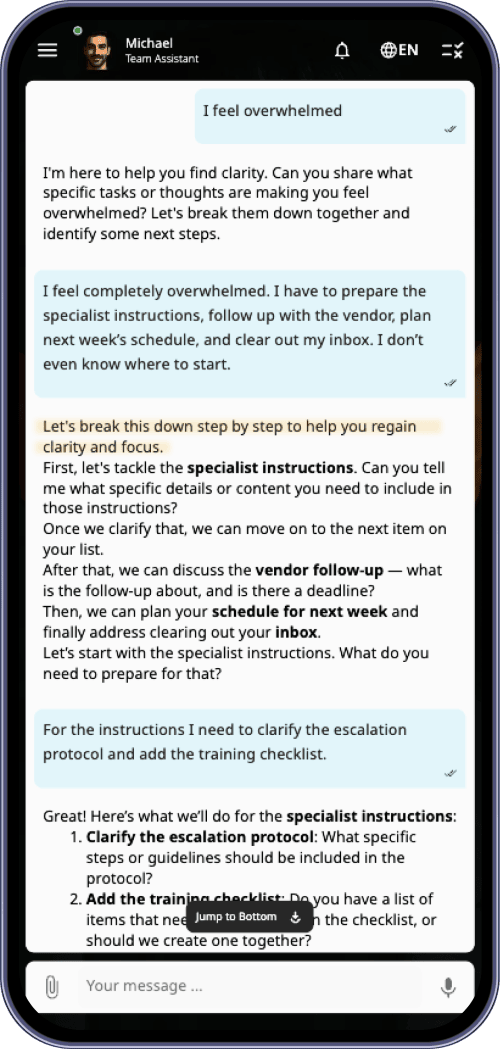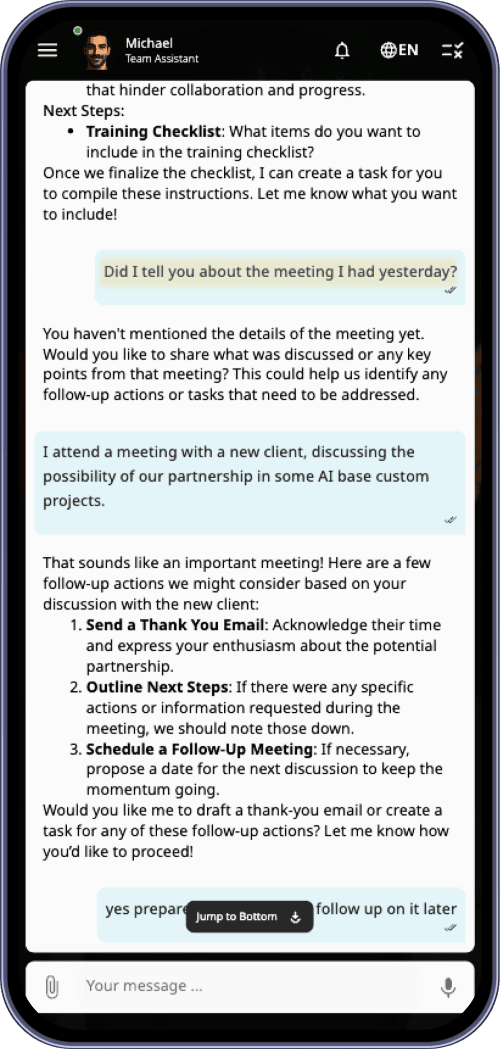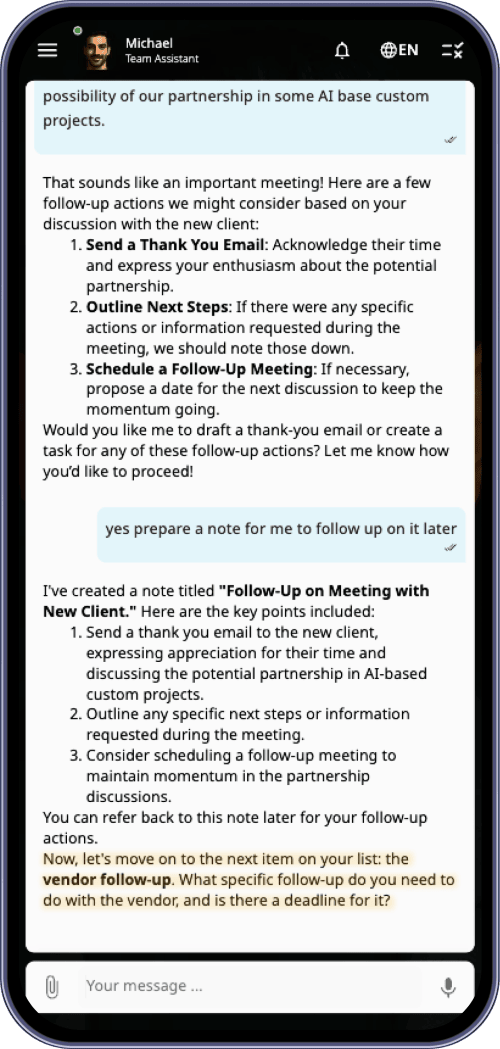New Team Assistant Version 1.1
Mental Clarity & Focus Support
We're introducing a new behavior update designed to support you when you're mentally overwhelmed. Team Assistant now listens for signs of mental overload and helps you sort through the chaos—one item at a time.
- Recognizes common phrases signaling cognitive overload (e.g. “I feel overwhelmed,” “I don’t know where to start”).
- Responds with structured guidance to surface key mental blockers and help define actionable next steps.
- Tracks all mentioned items and ensures each is processed individually to resolution.
- Prevents task/thread loss by maintaining state and revisiting unresolved points until completion.
Context Shift Awareness
Context-switching is common during a busy day, but it often leads to forgotten tasks or unsaved ideas. With this update, Team Assistant will:
- Detects when users switch topics (project, task, or person).
- Assesses previous context to identify unfinished thoughts, unsaved ideas, or pending actions.
When a shift is detected, the Assistant now:
- Pauses to review what was left behind.
- Prompts you to confirm whether previous inputs should be saved or completed.
- Ensures nothing is lost in transition.
This update is designed to keep you moving fast without leaving loose ends behind.
Clarifying Ambiguous Input
Vague inputs are no longer a problem. We’ve upgraded how Team Assistant handles unclear or loosely phrased inputs. The Team Assistant now asks the right questions—like a thoughtful colleague would. When you say things like:
- "I need to follow up on that client thing."
- "Handle the report issue."
Team Assistant won’t assume. Instead, it will:
- Uses Socratic-style questioning to resolve vague statements.
- Does not assume meaning from loosely defined phrases (e.g. “that client thing”).
- Seeks clarification until user intent is fully understood.
This reduces confusion, avoids errors, and ensures every task, note, or follow-up is tied to a specific context before it's processed or acted on.



